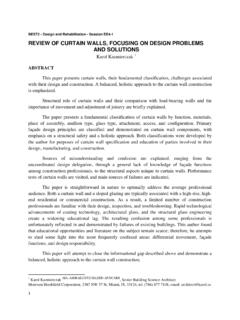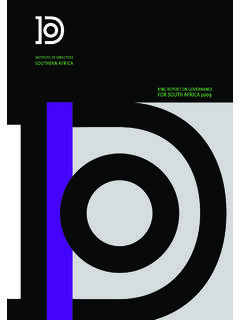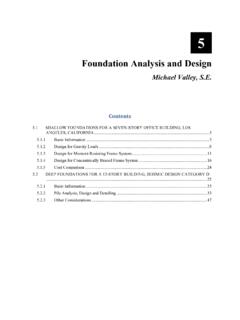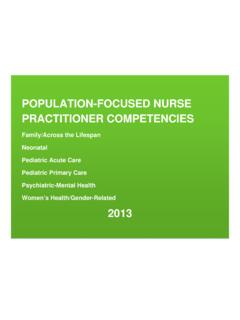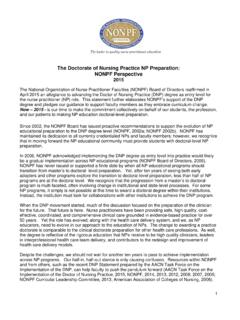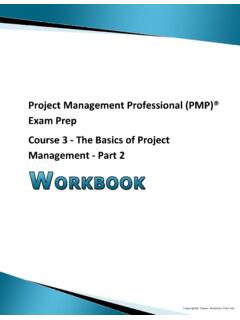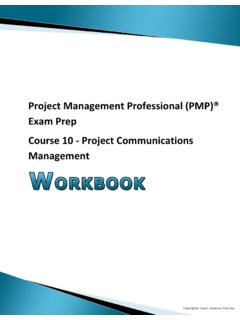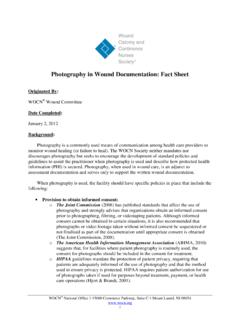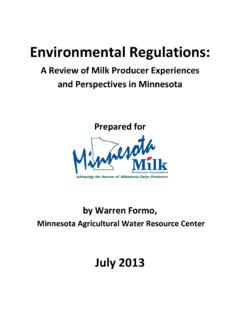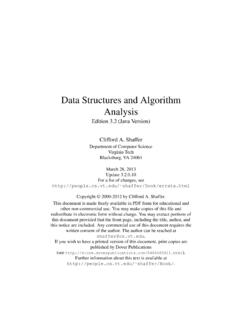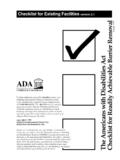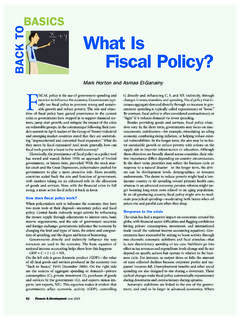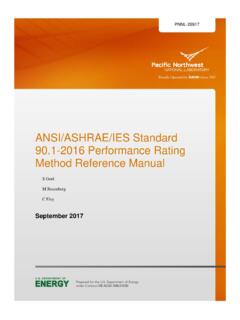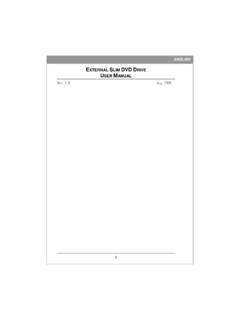Transcription of Offshore Wind and Marine Energy Health and Safety …
1 Offshore wind and Marine Energy Health and Safety Guidelines2014: Issue ACKNOWLEDGEMENTS RenewableUK acknowledges the time, effort, experience and expertise of all those who contributed to this document. This document was prepared for RenewableUK by SgurrEnergy Ltd. STATUS OF THIS DOCUMENT RenewableUK Health and Safety Guidelines are intended to provide information on a particular technical, legal or policy issue relevant to the core membership base of RenewableUK. Their objective is to provide industry-specific advice or guidance for example where current information could be considered absent or incomplete. Health and Safety guidelines are likely to be subject to review and updating and so the latest version of the guidelines must be referred to.
2 Attention is also drawn to the disclaimer below. DISCLAIMER The contents of these guidelines are intended for information and general guidance only, do not constitute advice, are not exhaustive and do not indicate any specific course of action. Detailed professional advice should be obtained before taking or refraining from action in relation to any of the contents of this guide, or the relevance or applicability of the information herein. RenewableUK are not responsible for the content of external websites included in these guidelines and where applicable the inclusion of a link to an external website should not be understood to be an endorsement of that website or the site's owners (or their products / services). The lists of links and references are also not exhaustive.
3 LINKS AND UPDATES All reasonable care has been taken to ensure that the references and links included in the guidance are accurate and effective at the date of publication. However should you identify any references or links that appear to be out of date or compromised, RenewableUK would welcome these being brought to our attention. Please e-mail any comments or concerns to: version 2014: Issue 2 2 Contents INTRODUCTION 5 PART A Health AND Safety Offshore 10 Introduction 10 Legal framework 11 Leadership & Safety Culture 34 Workforce engagement 37 Ergonomics, Human Factors and Behavioural Safety 39 Occupational Health and Medical Fitness to Work 44 Management Systems 49 Risk Management 59 Training and Competence 66 Safe systems of work 70 Simultaneous Marine Operations (SIMOPS)
4 79 Stakeholder engagement 81 Supply chain management 83 Management of Change 86 Strategic Planning 89 Emergency response & preparedness 91 First Aid and Emergency Medical Response 97 PART B THE Offshore LIFECYCLE 102 Introduction 102 Project Definition 104 Project Design 114 Construction & Commissioning 120 Operations & maintenance 125 Decommissioning 129 Survey & Geophysical 134 Logistics & Mobilisation 137 Modifications & upgrades 140 PART C Offshore HAZARDS AND ACTIVITIES 143 Introduction 143 Access and Egress 145 Aviation 156 Cable Laying and Entry 160 Confined Spaces 167 Electrical Safety 172 Ergonomics 177 Fire 181 Geological Unknowns 187 3 Hazardous Substances 191 Lifting 194 Marine Co-ordination 201 Metocean 205 Navigation 212 Noise 217 Piling and Grouting 220 Ports and Mobilisation 224 Remote Working 228 Subsea Operations 232 Unexploded Ordnance 240 Vessel Selection 243 Vibration 246 Waste and Spillage Management 249 Welfare 252 Work at Height 257 APPENDIX: EU DIRECTIVES AND ASSOCIATED UK REGULATIONS 262 PART D FURTHER REFERENCES AND GLOSSARY 263 Further References 263 Abbreviations 265 MAIN CHANGES FROM ISSUE 1 OF THE GUIDELINES: Section Change and Reason , Amended to take account of MCA feedback Comprehensive revision to take account of withdrawal of MHWSR ACOP and new version of HSG65, including the adoption of the Plan Do Check Act approach First Aid.
5 Section moved from in Issue 1, to reflect its position as part of the Health and Safety arrangements, rather than an activity or hazard, and to connect it with Emergency Response ( ); Title of section amended to First Aid and Emergency Medical Response to reflect current Offshore practice; Content of section aligned with revised HSE guidance. to Renumbered as a consequence of First Aid section being moved. Hyperlinks Updated to reflect new publications, and changes in website addresses. Links to DNV publications now go to category webpage, rather than individual documents. 4 Note: This document is recommended to be viewed as a pdf; this enables all headings to be used as bookmarks for ease of navigation: 5 INTRODUCTION The publication of the Offshore wind and Marine Energy Health and Safety Guidelines is an important milestone for the renewable Energy sector, and Offshore wind and Marine Energy projects in particular.
6 They support the strategic vision of RenewableUK: to be a leading enabler in the delivery of an expanding UK wind , wave and tidal sector free of fatalities, injuries and work related ill- Health . The guidelines support our commitment to championing Health and Safety for the benefit of everyone in the wind , wave & tidal industry, thereby: Continuing to make the UK a leader as a safe and responsible jurisdiction in which to do business; and Ensuring that Health and Safety remains a top priority throughout the wind , wave and tidal industry. SCOPE AND STATUS OF THE GUIDELINES The guidelines do not define or mandate any new industry standards or requirements. They have been developed by taking account of existing and emerging industry good practice within the framework of UK Health and Safety legislation.
7 Specifically, the guidelines consider the occupational Health and Safety of employees and others who may be exposed to risks as set out under the Health and Safety at Work etc. Act 1974 and the applicable subordinate regulations. While Marine legislation is referenced, the Health and Safety requirements for seafarers are not considered in detail within the scope of the guidelines. The guidelines do not aim to influence or direct any specific risk management, operational, technical or other solution. Duty holders throughout the life cycle of an Offshore wind or Marine Energy project continue to be responsible for ensuring compliance with regulatory and contractual obligations, and so must make their own assessment of the relevance and suitability of any guidance provided.
8 However, while no new standards are set out, the guidelines collectively are likely to be regarded as representing the current industry state of knowledge for the issues addressed. TARGET AUDIENCE OF THE GUIDELINES The guidelines are primarily written from the perspective of the developer or client in relation to projects designed, constructed, operated and maintained in the United Kingdom. However, they are likely to also provide a useful reference source for: Designers and Manufacturers of wind turbine generators (WTGs) and wave or tidal devices, balance of plant and associated project infrastructure; Contractors including Principal Contractors and other contracting and supply chain parties; and Professional advisers including nominated Health and Safety competent persons, CDM Co-ordinators, inspection and certification companies and other occupational Health and Safety advisers.
9 SCOPE AND CONTENT OF THE GUIDELINES The guidelines aim to consider occupational Health and Safety risks in relation to Offshore wind and Marine (wave and tidal) Energy projects1 with the territorial waters and Renewable Energy Zone (REZ)2 of the United Kingdom. For the purpose of this guidance: 1 Offshore Renewable Energy Installations (OREI s) including the associated balance of plant and project infrastructure. 2 A REZ is an area, outside the territorial sea, designated by order under section 84(4) of the Energy Act 2004 which may be exploited for the production of Energy from water or wind . 6 Offshore wind projects are considered to relate to WTGs as defined by EN 61400-3 (BS EN 61400-3:2009 - wind turbines.)
10 Design requirements for Offshore wind turbines) including the associated balance of plant and project infrastructure; and Marine Energy projects3 are considered to relate to Tidal Energy Converters (TEC)4 and Wave Energy Converters (WEC),5 including the associated balance of plant and project infrastructure. Either of these may constitute an Offshore Renewable Energy Installation (OREI), so this term is used throughout the guidelines, unless referring to a specific element of an OREI. The guidelines acknowledge a collective responsibility for Health and Safety in the industry, and so support a strategic objective to enhance the overall improvement in the Health and Safety performance of the sector. However, the guidelines cannot cover every relevant issue or every possible risk associated with the lifecycle of Offshore wind and Marine projects.
